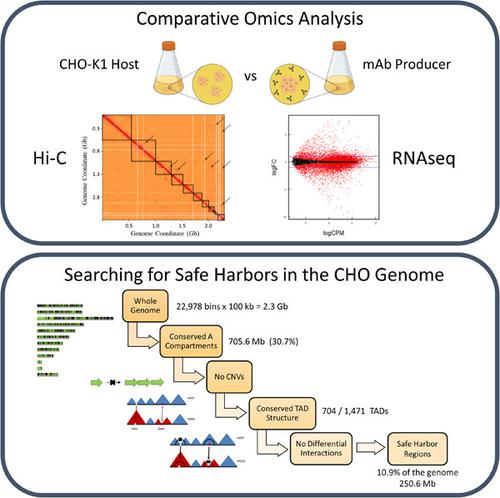当前位置:
X-MOL 学术
›
Biotechnol. Bioeng.
›
论文详情
Our official English website, www.x-mol.net, welcomes your feedback! (Note: you will need to create a separate account there.)
Systematic identification of safe harbor regions in the CHO genome through a comprehensive epigenome analysis
Biotechnology and Bioengineering ( IF 3.8 ) Pub Date : 2020-10-13 , DOI: 10.1002/bit.27599 William Hilliard 1 , Kelvin H Lee 1
Biotechnology and Bioengineering ( IF 3.8 ) Pub Date : 2020-10-13 , DOI: 10.1002/bit.27599 William Hilliard 1 , Kelvin H Lee 1
Affiliation

|
The Chinese hamster ovary (CHO) cell lines that are used to produce commercial quantities of therapeutic proteins commonly exhibit a decrease in productivity over time in culture, a phenomenon termed production instability. Random integration of the transgenes encoding the protein of interest into locations in the CHO genome that are vulnerable to genetic and epigenetic instability often causes production instability through copy number loss and silencing of expression. Several recent publications have shown that these cell line development challenges can be overcome by using site‐specific integration (SSI) technology to insert the transgenes at genomic loci, often called “hotspots,” that are transcriptionally permissive and have enhanced stability relative to the rest of the genome. However, extensive characterization of the CHO epigenome is needed to identify hotspots that maintain their desirable epigenetic properties in an industrial bioprocess environment and maximize transcription from a single integrated transgene copy. To this end, the epigenomes and transcriptomes of two distantly related cell lines, an industrially relevant monoclonal antibody‐producing cell line and its parental CHO‐K1 host, were characterized using high throughput chromosome conformation capture and RNAseq to analyze changes in the epigenome that occur during cell line development and associated changes in system‐wide gene expression. In total, 10.9% of the CHO genome contained transcriptionally permissive three‐dimensional chromatin structures with enhanced genetic and epigenetic stability relative to the rest of the genome. These safe harbor regions also showed good agreement with published CHO epigenome data, demonstrating that this method was suitable for finding genomic regions with epigenetic markers of active and stable gene expression. These regions significantly reduce the genomic search space when looking for CHO hotspots with widespread applicability and can guide future studies with the goal of maximizing the potential of SSI technology in industrial production CHO cell lines.
更新日期:2020-10-13



























 京公网安备 11010802027423号
京公网安备 11010802027423号